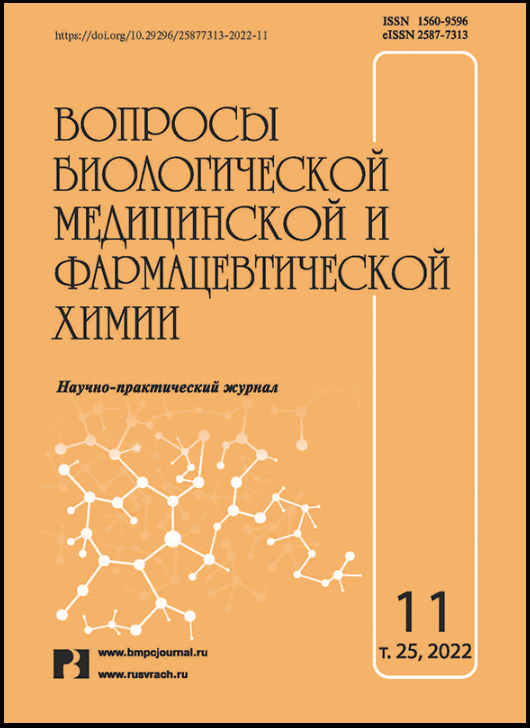Effect of light spectral composition on the essential oils accumulation in basil plants grown with artificial lighting
- Authors: Ivanitskikh A.S.1, Tarakanov I.G.2
-
Affiliations:
- Federal Scientific Agroengineering Center VIM
- Russian State Agrarian University - Moscow Timiryazev Agricultural Academy
- Issue: Vol 25, No 11 (2022)
- Pages: 3-9
- Section: Articles
- URL: https://journals.eco-vector.com/1560-9596/article/view/113003
- DOI: https://doi.org/10.29296/25877313-2022-11-01
- ID: 113003
Cite item
Abstract
Relevance. Sweet basil is a valuable green spice and flavor crop, widely grown in intensive cultivation systems with artificial lighting. The implementation of LEDs light sources with an adjustable spectral composition of light allows us to approach the fine tuning of physiological and biochemical processes in plant ontogenesis and the subsequent development of light recipes.
The aim of the research is to study the effect of light spectral composition on the qualitative and quantitative composition of the of the basil essential oil components for optimizing cultivation in vertical farms.
Material and methods. Sweet basil plants of the Dwarf and Lemon flavor varieties were grown in a vegetative experiment in a controlled environment. As the sources of optical radiation, white LEDs (LEDw) were used, as well as narrow-band LEDs with radiation in the red and blue regions of the headlights (LEDr and LEDr+b), high-pressure sodium lamps (HPS) were used as standard. The qualitative and quantitative composition of the essential oil accumulated in plant biomass was studied by gas chromatography-mass-spectrometry (GC-MS).
Results. The analysis of extracts from the leaves showed differences in the quantitative and qualitative composition of the essential oil components depending on the light spectral compositiont. The Dwarf variety had the highest content of 1,8-cineol (eugalyptol) under LEDr, linalool under LEDw, eugenol under LEDr+b. The Lemon flavor variety had the highest linalool content in variants with LEDr+b and LEDr, citral – under HPS and LEDw. The largest number of components of essential oils was detected during exposure to LEDr, the smallest – under HPS. The quantitative outcome of essential oils per m2 was maximal in the Dwarf variety under HPS, and in the Lemon flavor variety under LEDw.
Conclusion. The regulation of the spectral composition of light when using LED irradiators makes it possible to optimize the production process and influence the biosynthesis of target functional compounds in plant biomass. Along with high operational and economic indicators of LEDs (long service life, low heat generation, reduced electricity costs for obtaining a unit of biomass) this makes it possible to increase the profitability of sweet basil light culture in vertical farms.
Full Text
About the authors
A. S. Ivanitskikh
Federal Scientific Agroengineering Center VIM
Author for correspondence.
Email: alinena@yandex.ru
Junior Research Scientist
Russian Federation, MoscowI. G. Tarakanov
Russian State Agrarian University - Moscow Timiryazev Agricultural Academy
Email: alinena@yandex.ru
Dr.Sc. (Biol.), Professor, Department of Plant Physiology, Institute of Agrobiotechnologies
Russian Federation, MoscowReferences
- Chang X. Effect of light and temperature on volatile compounds and growth parameters in sweet basil (Ocimum basilicum L.). Thesis for the degree of Doctor of Philosophyю. 2004: 177.
- Al-Kateb H., Mottram D. The relationship between growth stages and aroma composition of lemon basil Ocimum citriodorum Vis. Pab Med. 2014; 152: 440–446.
- Chang X., Alderson P., Wright C. Variation in the Essential Oils in Different Leaves of Basil (Ocimum basilicum L.) at Day Time. The Open Horticulture Journal. 2009; 2(1): 13–16.
- Wierdak R., Kocka A., Kowalski R., Borowski B. Changes in the chemical composition of the essential oil of sweet basil (Ocimum basilicum L.) depending on the plant growth stage. Chemija. 2012; 23(3): 216–222.
- Tarakanov I., Yakovleva O., Konovalova I., Paliutina G., Anisimov A. Light-emitting diodes: on the way to combinatorial lighting technologies for basic research and crop production. Acta Horticulturae. 2012; 956: 171–178.
- Prikupets L.B., Boos G.V., Terekhov V.G., Tarakanov I.G. Optimization of lighting parameters of irradiation in light culture of lettuce plants using LED emitters. Light and Engineering. 2019; 27(5): 43–54.
- Fu X., Chen Y., Mei X. Regulation of formation of volatile compounds of tea (Camellia sinensis) leaves by single light wavelength. Scientific reports. 2015; 5(16858): 1–11.
- Burbott A., Loomis W. Effects of light and temperature on the monoterpenes of peppermint. Plant Physiol. 1967; 42(1): 20–28.
- Charles D., Simon J. Comparison of Extraction Methods for the Rapid Determination of Essential Oil Content and Composition of Basil. American Society for Horticultural Science. 1990; 458–462.
- Tangpao T., Chung H., Sommano S. Aromatic Profiles of Essential Oils from Five Commonly Used Thai Basils. Analysis of Food Aroma. 2018; 7(11): 175–188.
Supplementary files









